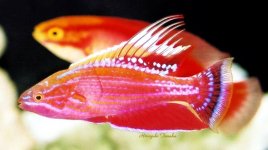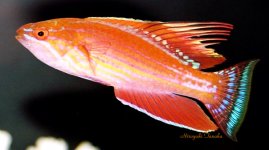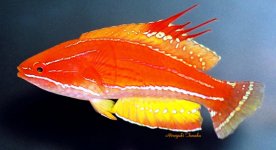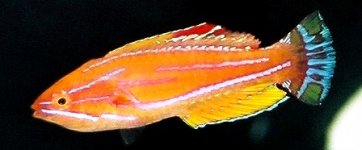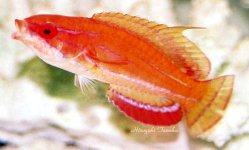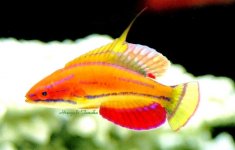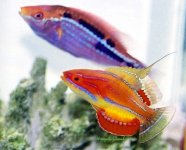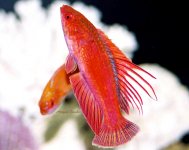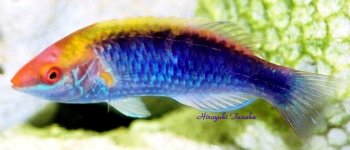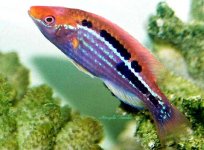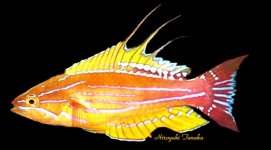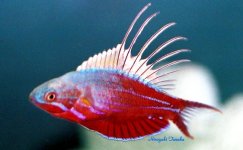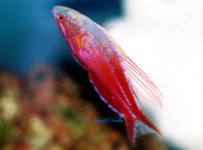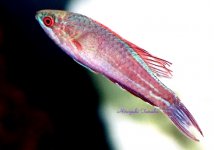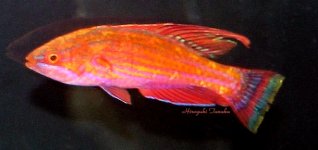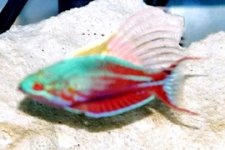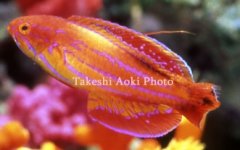These are shots of the same male in exciting moment (upper) and displaying (lower).
When it is displaying the body and fins change from orange to intense red.
The filaments and part of D-fin turn white and also stripes on side became bluish and more conspicuous. I hope you to understand why I think that it's parents are angulatus and lineopunctatus.
Species of Paracheilinus and Cirrhilabrus will choose evening to night to behave for reproduction, because enemies are not easy to find the eggs or sperm. Probably predators would attack them in the daytime more than dark evening. Several different species exist in Indonesia and so many harems of different species will reproduce at the same time. Then some eggs and sperms will mix and natural hybridisation will occur.
I was keeping several unusual specimens of Paracheilinus until now, most of them were possible hybrids.
When it is displaying the body and fins change from orange to intense red.
The filaments and part of D-fin turn white and also stripes on side became bluish and more conspicuous. I hope you to understand why I think that it's parents are angulatus and lineopunctatus.
Species of Paracheilinus and Cirrhilabrus will choose evening to night to behave for reproduction, because enemies are not easy to find the eggs or sperm. Probably predators would attack them in the daytime more than dark evening. Several different species exist in Indonesia and so many harems of different species will reproduce at the same time. Then some eggs and sperms will mix and natural hybridisation will occur.
I was keeping several unusual specimens of Paracheilinus until now, most of them were possible hybrids.




